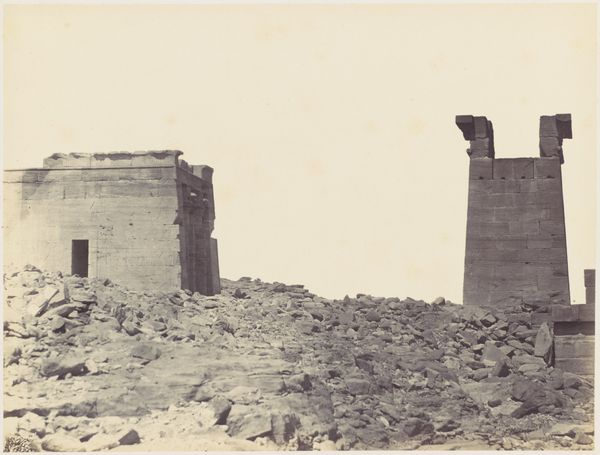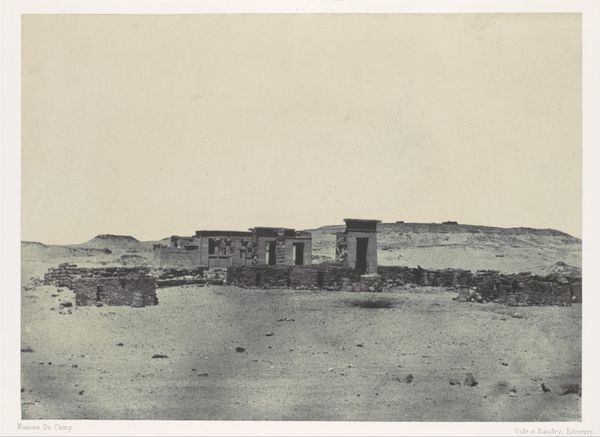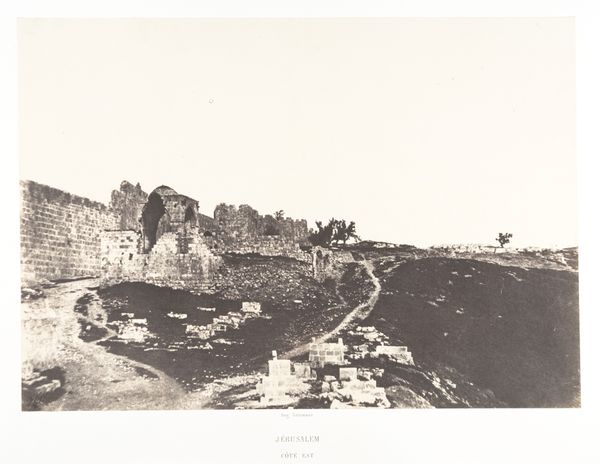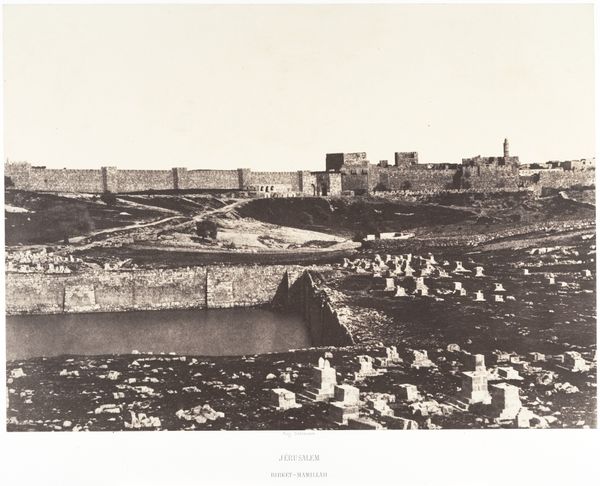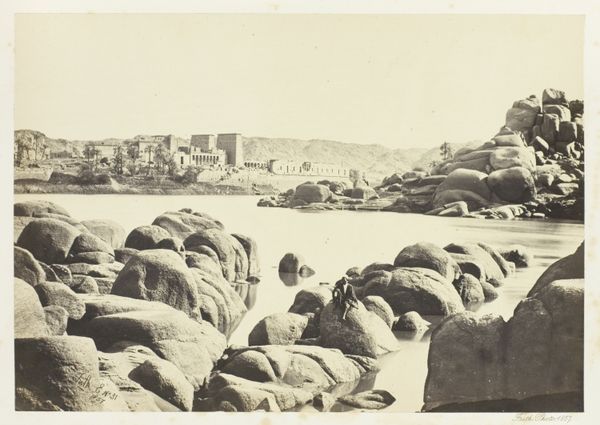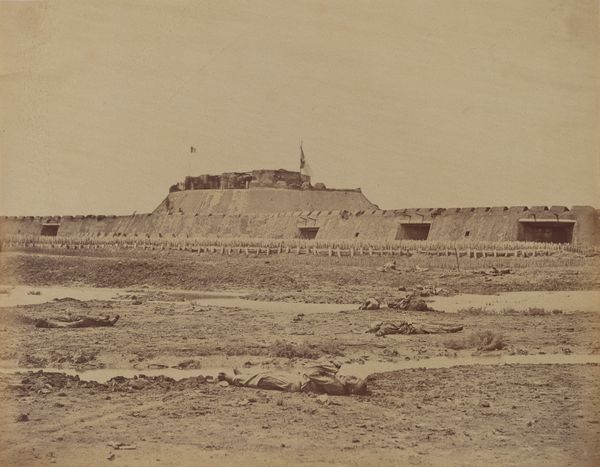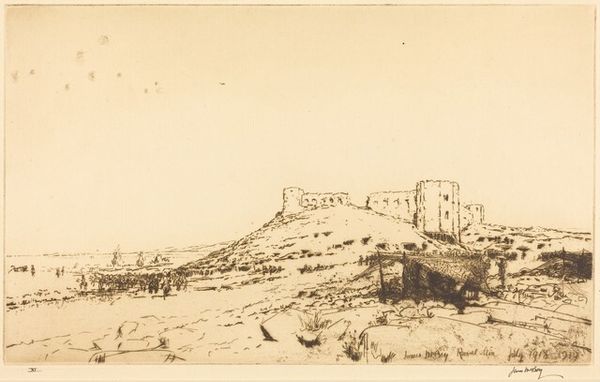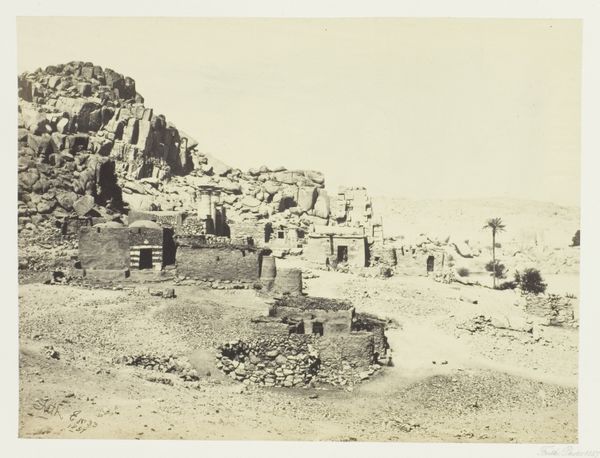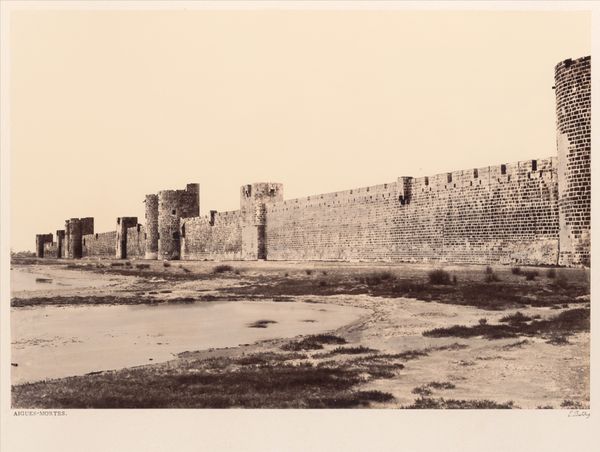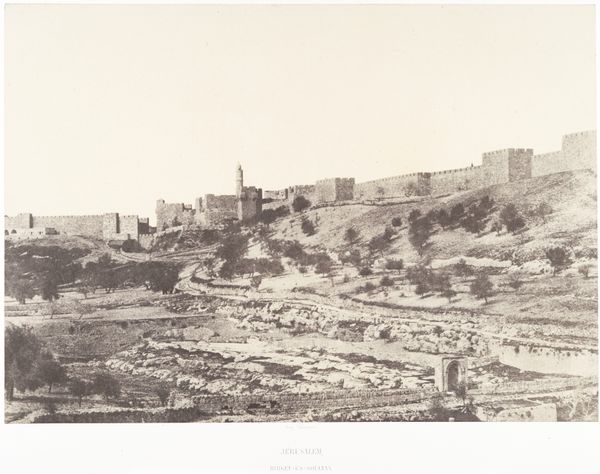
Assouan, Ruines de l'Ancienne Enciente Arabe, au Sud-Est de la Ville 1851 - 1852
0:00
0:00
print, daguerreotype, photography, architecture
# print
#
landscape
#
daguerreotype
#
ancient-egyptian-art
#
outdoor photography
#
photography
#
arch
#
academic-art
#
architecture
Dimensions: 23.8 x 30.4 cm. (9 3/8 x 12 in.)
Copyright: Public Domain
Curator: The ruins in Félix Teynard’s 1851-1852 photograph, "Assouan, Ruines de l'Ancienne Enciente Arabe, au Sud-Est de la Ville," speak volumes about power and the perception of history. What is your first impression? Editor: I'm struck by the stillness, almost like a stage set for a drama long past. The stark, sandy tones really highlight the ruins themselves, which, given that they’re Arab ruins in Egypt, makes me wonder, what story is Teynard trying to tell? Curator: Precisely! Teynard, as a Frenchman, photographs these ruins during a period of intense European interest in the "Orient." We have to ask, who gets to define whose history is worth preserving, or in this case, photographing and circulating? Does this image participate in a colonial gaze? Editor: It seems like it could be. By focusing on the “Arab” ruins, is he implicitly positioning them as ‘other,’ maybe even less significant than, say, ancient Egyptian structures? Curator: Exactly! The selection of subject matter, framing, and even the act of documentation itself becomes a statement. Consider the power dynamics inherent in representing a conquered or colonized space. Who benefits from this visual record? Editor: So, it’s not just a picture of old ruins; it’s also about how those ruins are being presented and why. The power in deciding what gets remembered… Curator: Indeed. It reveals more about 19th-century European attitudes toward the Middle East than it does about the ruins themselves. What have you gathered? Editor: I will remember from now on to look for the undercurrent of societal dynamics behind a still photograph like this one. Thanks!
Comments
No comments
Be the first to comment and join the conversation on the ultimate creative platform.

